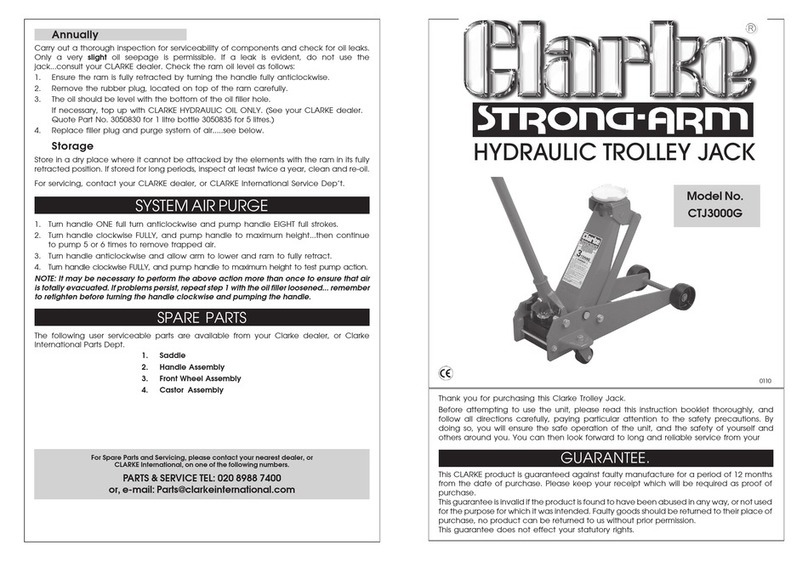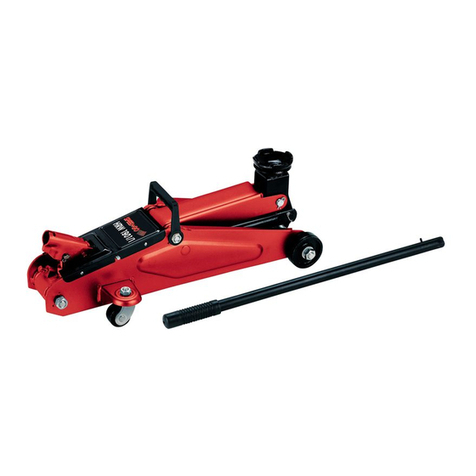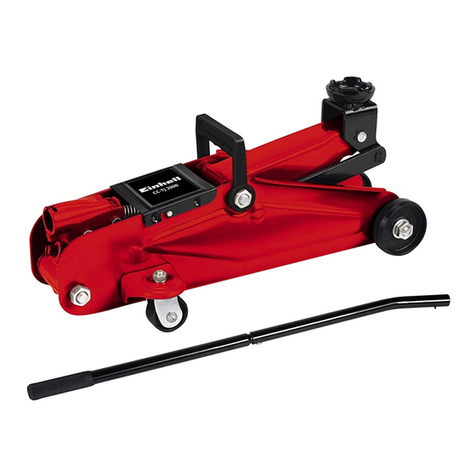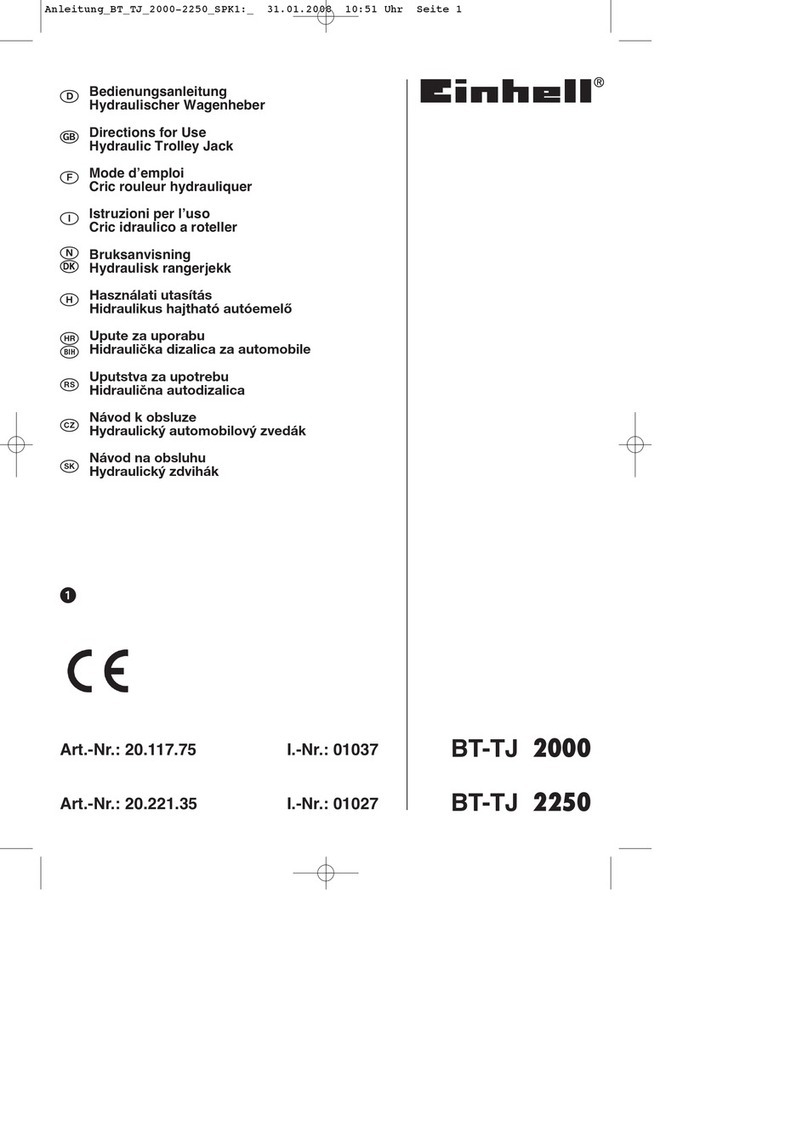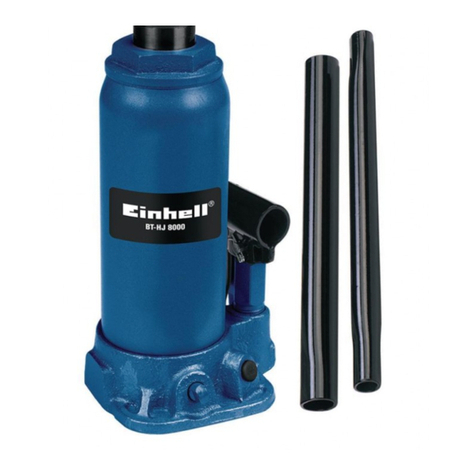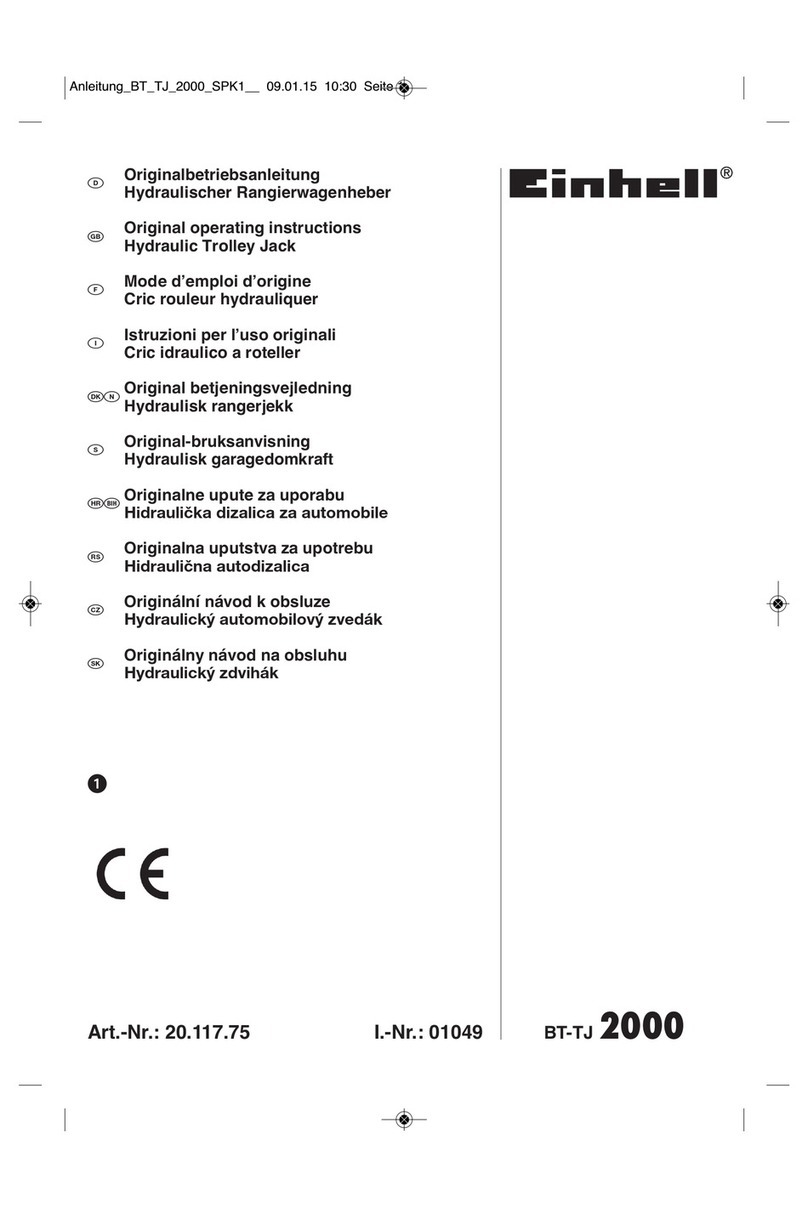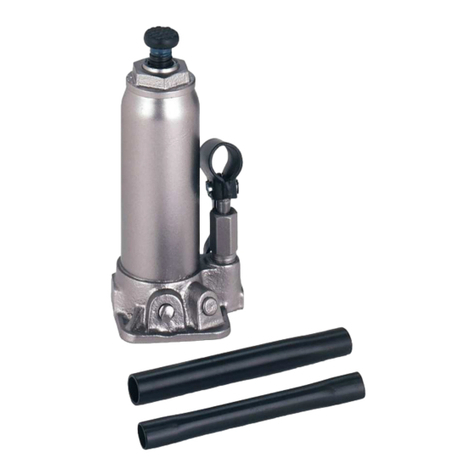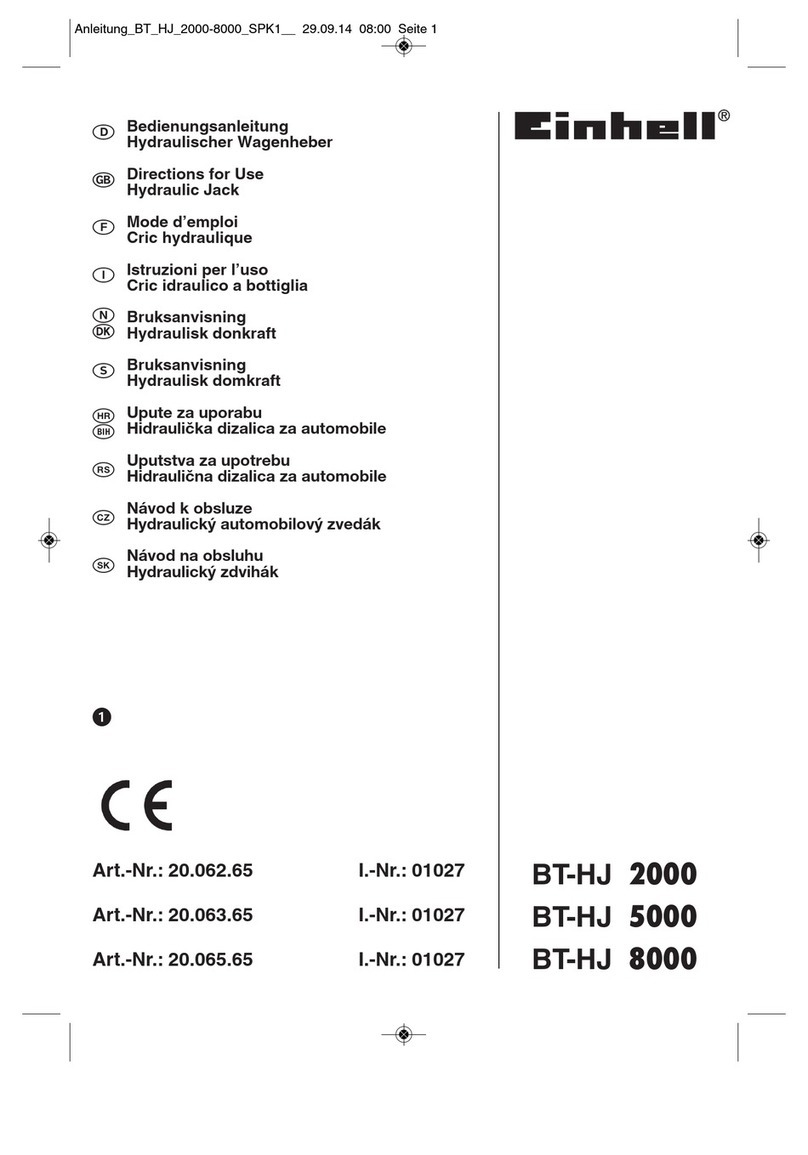b) Purgar el aire (fig. 2)
Es preciso extraer el aire del sistema hidráulico
como mínimo después de cada rellenado de aceite.
Un largo periodo de tiempo sin utilizar el gato puede
originar también la formación de burbujas de aire en
las mangueras de aceite del sistema hidráulico.
La falta de purga provoca que la carga elevada
descienda ligeramente o incluso hasta la mitad. Para
proceder a la purga: eleve el brazo de elevación sin
carga
hasta aprox. la mitad de su capacidad. Presione a
continuación el pedal del gato con el pie para que se
genere un cierta contrapresión en el sistema
hidráulico. Es imprescindible que el tornillo de purga
del gato esté cerrado. Presione ligeramente con el
destornillador en el tapón de goma lateralmente
hasta que se escape el aire. Baje el gato abriendo el
tornillo de purga y repita el procedimiento unas 2 ó 3
veces.
También se ventila el sistema hidráulico por medio
del tornillo de purga. El hecho de que salga aceite
gota a gota durante el procedimiento no influye para
nada en el buen funcionamiento posterior del gato.
De este modo se asegura de que se expulsen las
posibles burbujas de aire de los canales de aceite y
de que el gato funcione en perfecto estado.
¡Recoja el aceite usado o derramado en un
recipiente especial y deshágase del mismo de
forma ecológica en el lugar adecuado!
6. Para elevar automóviles (fig. 1)
Asegúrese antes de elevar un automóvil de que el
mismo se encuentre aparcado sobre un suelo
resistente para que el gato no se hunda cuando se
eleve la carga. Cuando hace calor puede suceder
fácilmente que el gato se hunda en superficies
alquitranadas y se resbale lateralmente.
Ponga en todo caso el freno de mano y calce
adicionalmente el vehículo, si es posible, para evitar
que se desplace. Coloque el gato debajo del coche
de manera que los discos de apoyo puedan encajar
de forma segura en las superficies de apoyo. En el
caso de automóviles viejos con piezas oxidadas, se
corre fácilmente el riesgo de que se produzcan
roturas en la carrocería.
Es preciso que el tornillo de purga esté bien cerrado.
Bombee con la palanca elevadora el brazo de
elevación hasta estar justo debajo del coche pero sin
ejercer todavía presión.
De este modo, tiene la posibilidad de ajustar de
forma exacta el gato para que el automóvil pueda
elevarse de forma segura y estable.
Por motivos de seguridad personal, el automóvil
elevado debe asegurarse siempre de forma adicional
con un cric de apoyo para coches como mínimo,
siempre y cuando se haya elevado sólo una rueda.
Una vez realizado el trabajo, saque primero el cric y,
con ayuda de la palanca elevadora, descienda el
brazo de elevación girando ligeramente el tornillo de
purga. Ud. mismo puede regular la velocidad de
descenso girando más o menos el tornillo de purga.
El gato está equipado con una válvula de
sobrecarga. La válvula se halla colocada
lateralmente en la bomba hidráulica. Esta válvula
viene ajustada de fábrica de tal modo que no puede
sobrepasarse la carga máxima.
No trate de reajustar Ud. mismo esta válvula, ya que,
de lo contrario, la garantía perdería su validez en
caso de que se dañara el aparato.
Una vez que el brazo haya alcanzado su altura
máxima ya no se podrá ejercer presión en el sistema
hidráulico aunque se siga bombeando, gracias a la
válvula de seguridad
o al dispositivo de sobrecorriente.
7. Mantenimiento, limpieza y pedido de
piezas de repuesto
7.1 Mantenimiento
Sería preciso engrasar con aceite todas las
articulaciones móviles, dependiendo del uso, cada
tres meses, o bien engrasar los rodamientos de
rodillos o las ruedas de desviación. Todos los
sistemas hidráulicos están equipados con juntas
tóricas que, dependiendo del uso, producen
desgaste. En nuestro taller de servicio técnico
obtendrá juegos de reparación.
Utilice sólo aceite exento de ácidos para evitar que
se dañen las juntas.
¡Recoja el aceite usado o derramado en un
recipiente especial y deshágase del mismo de forma
ecológica en el lugar adecuado!
Siempre que el gato hidráulico esté fuera de servicio,
el sistema hidráulico (émbolo) debería estar siempre
en posición de reposo (émbolo recogido). Esto
protege de la corrosión las superficies de acabado
preciso del émbolo y del vástago.
Para conseguir que el gato funcione de forma
correcta emplee sólo aceite hidráulico de alta
calidad. ¡No mezcle aceites distintos bajo ningún
concepto! No utilice nunca líquido de frenos, alcohol,
glicerina, aceite contaminado, etc.
7
E


